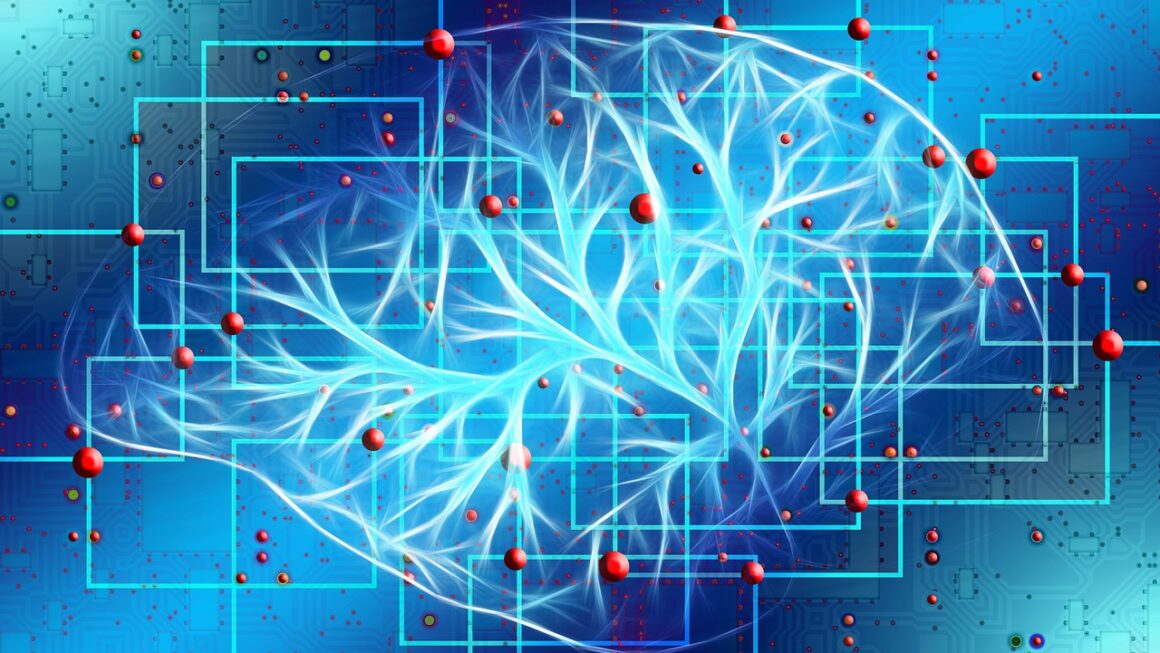The relentless march of artificial intelligence (AI) continues to reshape our world, promising advancements that once belonged solely to the realm of science fiction. From self-driving cars and personalized medicine to smarter homes and enhanced productivity, the potential applications of AI are seemingly limitless. But with this immense power comes a need for understanding, ethical considerations, and a realistic assessment of what the future holds. Let’s delve into the future of AI, exploring its transformative impact and the challenges that lie ahead.
AI’s Expanding Reach: Transforming Industries
AI is no longer confined to research labs; it’s actively reshaping industries across the board. Its ability to automate tasks, analyze vast datasets, and make data-driven decisions is proving invaluable.
Healthcare Revolution
- Personalized Medicine: AI algorithms can analyze individual patient data (genetics, lifestyle, medical history) to tailor treatment plans for optimal effectiveness. Imagine receiving medication specifically designed for your unique biological makeup.
- Faster Drug Discovery: AI is accelerating the drug discovery process by analyzing complex biological data and predicting the efficacy of potential drug candidates, reducing the time and cost associated with bringing new medications to market.
- Improved Diagnostics: AI-powered imaging analysis can detect diseases like cancer at earlier stages with greater accuracy than traditional methods, leading to improved patient outcomes. For example, AI is now routinely used to analyze mammograms, detecting subtle anomalies that might be missed by the human eye.
The Future of Work
- Automation & Efficiency: AI-powered automation is streamlining workflows and increasing productivity across various industries. Tasks like data entry, customer service inquiries, and even certain manufacturing processes are being handled efficiently by AI systems.
- Enhanced Creativity: AI isn’t just about replacing jobs; it’s also about augmenting human capabilities. AI tools can assist with creative tasks like content creation, graphic design, and even music composition, freeing up human professionals to focus on higher-level strategic thinking.
- Upskilling & Reskilling: As AI transforms the job market, there’s a growing need for individuals to acquire new skills to work alongside AI systems. This includes learning how to manage, train, and interpret the output of AI algorithms. Think of roles like “AI trainer” or “AI ethicist” that are starting to emerge.
Smarter Cities & Infrastructure
- Optimized Traffic Flow: AI-powered traffic management systems can analyze real-time traffic data to optimize traffic light timings, reduce congestion, and improve overall transportation efficiency.
- Predictive Maintenance: AI can analyze data from sensors embedded in infrastructure (bridges, roads, power grids) to predict potential failures and schedule maintenance proactively, preventing costly breakdowns and ensuring public safety.
- Energy Efficiency: AI algorithms can optimize energy consumption in buildings and cities by analyzing factors like weather patterns, occupancy levels, and energy usage patterns. This leads to significant cost savings and reduced environmental impact.
Ethical Considerations: Navigating the Challenges
The rapid advancements in AI raise critical ethical concerns that need to be addressed proactively.
Bias & Fairness
- Algorithmic Bias: AI algorithms are trained on data, and if that data reflects existing societal biases, the algorithms will perpetuate and even amplify those biases. For example, facial recognition systems have been shown to be less accurate in identifying individuals with darker skin tones due to biased training data.
- Ensuring Fairness: It’s crucial to develop and deploy AI systems that are fair and unbiased, ensuring that everyone has equal opportunities and outcomes. This requires careful attention to data collection, algorithm design, and ongoing monitoring for bias.
- Transparency & Explainability: Understanding how AI algorithms make decisions is essential for ensuring fairness and accountability. “Explainable AI” (XAI) aims to develop AI systems that can provide clear and understandable explanations for their decisions, allowing humans to identify and correct biases.
Privacy & Security
- Data Privacy: AI systems often require vast amounts of data to function effectively, raising concerns about data privacy and security. It’s important to implement robust data protection measures to safeguard sensitive information and prevent unauthorized access.
- Cybersecurity Threats: AI can be used for malicious purposes, such as creating sophisticated phishing attacks, developing autonomous weapons, and spreading disinformation. It’s essential to develop countermeasures to protect against these AI-powered threats.
- Regulation & Governance: Governments and regulatory bodies need to establish clear guidelines and regulations for the development and deployment of AI to ensure responsible innovation and prevent misuse.
Job Displacement & Economic Impact
- The Automation Paradox: While AI can automate many tasks, it also creates new opportunities for innovation and economic growth. However, there’s a risk of job displacement in certain sectors, particularly those involving repetitive or manual tasks.
- Investing in Education & Training: To mitigate the potential negative impacts of job displacement, it’s crucial to invest in education and training programs that equip workers with the skills they need to thrive in the AI-driven economy.
- Social Safety Nets: Exploring alternative economic models, such as universal basic income, may be necessary to ensure that everyone benefits from the advancements in AI.
The Singularity & Beyond: Speculation vs. Reality
The concept of the “singularity” – a hypothetical point in time when AI surpasses human intelligence – is a subject of much debate. While it’s impossible to predict the future with certainty, it’s important to distinguish between realistic possibilities and speculative scenarios.
Narrow vs. General AI
- Narrow AI: Current AI systems are primarily “narrow AI,” meaning they are designed to perform specific tasks, such as image recognition or natural language processing. They lack the general intelligence and adaptability of humans.
- Artificial General Intelligence (AGI): AGI refers to AI systems that possess human-level cognitive abilities, capable of learning, understanding, and applying knowledge across a wide range of domains. AGI is still a long-term goal, and there’s no consensus on when or if it will be achieved.
- Superintelligence: Superintelligence refers to AI systems that surpass human intelligence in every possible way, potentially leading to unpredictable and even catastrophic consequences. This is a highly speculative scenario that requires careful consideration.
The Pace of Innovation
- Exponential Growth: AI technology is advancing at an exponential pace, with new breakthroughs and applications emerging constantly. However, this doesn’t necessarily mean that we’re on the verge of the singularity.
- Challenges & Limitations: There are still significant challenges to overcome in areas like common sense reasoning, ethical decision-making, and understanding human emotions. These limitations may slow down the progress towards AGI and superintelligence.
- Human-Centered Approach: It’s important to prioritize a human-centered approach to AI development, focusing on how AI can augment human capabilities and solve pressing societal challenges, rather than solely pursuing the goal of creating superintelligent machines.
Preparing for the AI-Driven Future
The future of AI is not predetermined; it’s up to us to shape it in a way that benefits humanity. Here are some steps individuals and organizations can take to prepare for the AI-driven future:
Education & Awareness
- Stay Informed: Keep up-to-date with the latest developments in AI by reading articles, attending conferences, and taking online courses.
- Develop AI Literacy: Learn the basics of AI, including how algorithms work, the ethical implications of AI, and the potential impact of AI on your industry or profession.
- Promote Critical Thinking: Encourage critical thinking about AI, questioning the assumptions and biases that may be embedded in AI systems.
Skills Development
- Acquire New Skills: Invest in training and education programs that focus on skills that are in demand in the AI-driven economy, such as data science, machine learning, and software engineering.
- Embrace Lifelong Learning: Be prepared to continuously learn and adapt to new technologies and changing job requirements.
- Focus on Human Skills: Develop skills that are difficult to automate, such as creativity, critical thinking, communication, and emotional intelligence.
Ethical Frameworks & Governance
- Develop Ethical Guidelines: Establish ethical guidelines for the development and deployment of AI systems, addressing issues like bias, fairness, transparency, and accountability.
- Promote Collaboration: Foster collaboration between researchers, policymakers, industry leaders, and the public to develop a shared understanding of the ethical and societal implications of AI.
- Support Responsible Innovation: Encourage responsible innovation in AI, prioritizing the development of AI systems that are safe, reliable, and beneficial to humanity.
Conclusion
The future of AI is filled with both immense promise and potential challenges. By understanding the transformative power of AI, addressing the ethical considerations, and preparing for the changes ahead, we can harness the potential of AI to create a better future for all. The key is to approach AI development and deployment with a thoughtful, ethical, and human-centered perspective, ensuring that this powerful technology serves humanity’s best interests. As AI continues to evolve, so too must our understanding, adaptation, and ethical compass. The future is not just AI; it’s humanity with AI.




